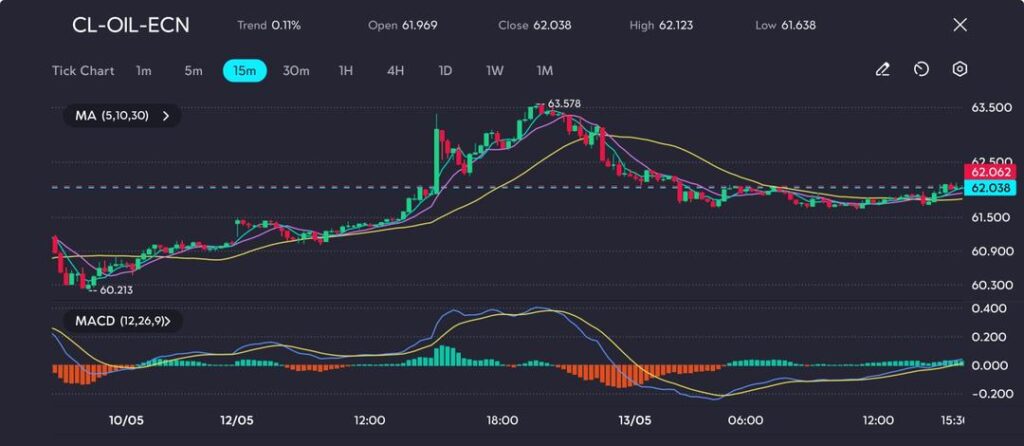
Key Points:
- WTI crude rises 0.2% to $62.09 a barrel after reaching a two-week high of $63.58.
- Uncertainty remains around OPEC+ production policy and U.S.-China trade talks post-90-day truce.
Oil prices edged up in early Monday trading, holding near recent highs as markets digested the impact of a 90-day pause in U.S.-China tariffs. West Texas Intermediate (WTI) crude climbed 0.2% to $62.09 a barrel, while Brent crude touched $65.08, both maintaining levels last seen in late April.
The rise follows last week’s broad market rally, which was sparked by President Donald Trump’s surprise announcement to reduce tariffs on Chinese imports from 145% to 30% for a 90-day window. This move restored some trader confidence and reignited risk-on sentiment, though analysts caution the reprieve may prove fleeting.
“The move to reduce tariffs for 90 days was certainly more aggressive than many expected,” ING analysts noted. “But there’s still plenty of uncertainty over what happens in 90 days.”
Technical Analysis
Crude oil (CL-OIL-ECN) saw a sharp breakout from the $60.21 support zone, lifting aggressively to test a local peak of $63.58 before retracing. The move was driven by a strong MACD crossover and rising histogram bars, signalling bullish momentum through the early stages of 13 May. However, the subsequent decline pulled the price back below the 10- and 30-period moving averages, and the MACD has since flattened, suggesting a potential shift toward consolidation.
Picture: Oil spikes to $63.58 before retreating; support builds at $61.60 as traders eye fresh breakout signs, as seen on the VT Markets app
The $61.60–$62.00 zone now acts as a short-term equilibrium level. Price has stabilised around this region, and while momentum has cooled, the bulls are still defending key higher lows. A clean reclaim of $62.50 could open the door to another leg higher, but failure to hold above $61.60 risks deeper retracement toward $60.80.
Aside from trade headlines, the market remains focused on supply-side risks. Traders are awaiting a firm stance from OPEC+, which has accelerated output hikes in recent months. A key decision looms in June, when the group will reassess its strategy amid rising global inventories and tepid demand growth forecasts.
Fitch’s BMI recently warned that non-OPEC supply—particularly from the U.S. and Brazil—is outpacing demand, creating a fragile balance for OPEC+ to manage. If production cuts are not extended or deepened, oil may struggle to sustain gains.
Cautious Forecast
Short-term price action may remain elevated as traders cling to optimism around global trade diplomacy. However, without a clear signal from OPEC+ or a permanent easing of tariffs, upside potential could be capped. Volatility remains a high risk factor heading into the June production meeting.










